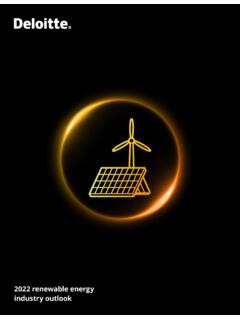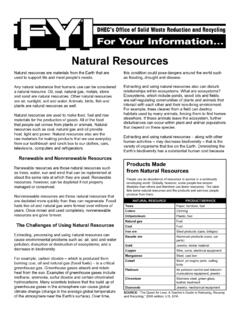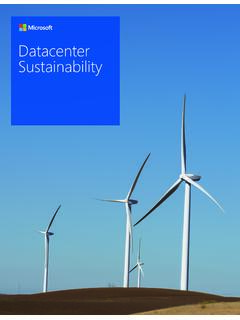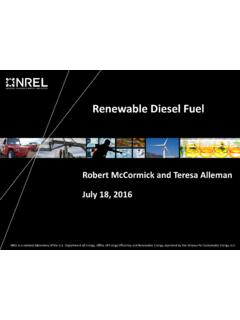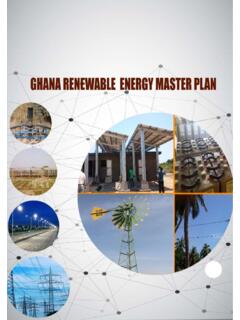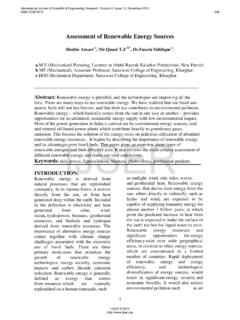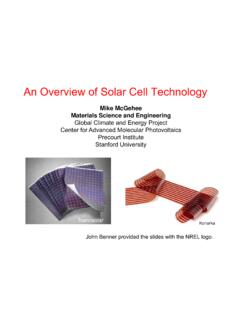Transcription of Renewable and Efficient Electric Power Systems
1 Renewable and Ef cient Electric Power Systems Gilbert M. Masters Stanford University A JOHN WILEY & SONS, INC., PUBLICATION. Renewable and Ef cient Electric Power Systems Renewable and Ef cient Electric Power Systems Gilbert M. Masters Stanford University A JOHN WILEY & SONS, INC., PUBLICATION. Copyright 2004 by John Wiley & Sons, Inc., Hoboken, New Jersey. All rights reserved. Published by John Wiley & Sons, Inc., Hoboken, New Jersey. Published simultaneously in Canada. No part of this publication may be reproduced, stored in a retrieval system, or transmitted in any form or by any means, electronic, mechanical, photocopying, recording, scanning, or otherwise, except as permitted under Section 107 or 108 of the 1976 United States Copyright Act, without either the prior written permission of the Publisher, or authorization through payment of the appropriate per-copy fee to the Copyright Clearance Center, Inc., 222 Rosewood Drive, Danvers, MA 01923, 978-750-8400, fax 978-750-4470, or on the web at Requests to the Publisher for permission should be addressed to the Permissions Department, John Wiley &.
2 Sons, Inc., 111 River Street, Hoboken, NJ 07030, (201) 748-6011, fax (201) 748-6008, e-mail: Limit of Liability/Disclaimer of Warranty: While the publisher and author have used their best efforts in preparing this book, they make no representations or warranties with respect to the accuracy or completeness of the contents of this book and speci cally disclaim any implied warranties of merchantability or tness for a particular purpose. No warranty may be created or extended by sales representatives or written sales materials. The advice and strategies contained herein may not be suitable for your situation. You should consult with a professional where appropriate. Neither the publisher nor author shall be liable for any loss of pro t or any other commercial damages, including but not limited to special, incidental, consequential, or other damages. For general information on our other products and services please contact our Customer Care Department within the at 877-762-2974, outside the at 317-572-3993 or fax 317-572-4002.
3 Wiley also publishes its books in a variety of electronic formats. Some content that appears in print, however, may not be available in electronic format. Library of Congress Cataloging-in-Publication Data Masters, Gilbert M. Renewable and ef cient Electric Power Systems / Gilbert M. Masters. p. cm. Includes bibliographical references and index. ISBN 0-471-28060-7 (cloth). 1. Electric Power Systems Energy conservation. 2. Electric Power Systems Electric losses. I. Title 2004. dc22. 2003062035. Printed in the United States of America. 10 9 8 7 6 5 4 3 2 1. To the memory of my father, Gilbert S. Masters 1910 2004. CONTENTS. Preface xvii 1 Basic Electric and Magnetic Circuits 1. Introduction to Electric Circuits 1. De nitions of Key Electrical Quantities 2. Charge 2. Current 3. Kirchhoff's Current Law 3. Voltage 5. Kirchhoff's Voltage Law 7. Power 7. Energy 8. Summary of Principal Electrical Quantities 8. Idealized Voltage and Current Sources 9. Ideal Voltage Source 9.
4 Ideal Current Source 10. Electrical Resistance 10. Ohm's Law 10. Resistors in Series 12. Resistors in Parallel 13. The Voltage Divider 15. Wire Resistance 16. vii viii CONTENTS. Capacitance 21. Magnetic Circuits 24. Electromagnetism 24. Magnetic Circuits 26. Inductance 29. Physics of Inductors 29. Circuit Relationships for Inductors 33. Transformers 36. Ideal Transformers 37. Magnetization Losses 40. Problems 44. 2 Fundamentals of Electric Power 51. Effective Values of Voltage and Current 51. Idealized Components Subjected to Sinusoidal Voltages 55. Ideal Resistors 55. Idealized Capacitors 57. Idealized Inductors 59. Power Factor 61. The Power Triangle and Power Factor Correction 63. Three-Wire, Single-Phase Residential Wiring 67. Three-Phase Systems 69. Balanced, Wye-Connected Systems 70. Delta-Connected, Three-Phase Systems 76. Power Supplies 77. Linear Power Supplies 78. Switching Power Supplies 82. Power Quality 86. Introduction to Harmonics 87. Total Harmonic Distortion 92.
5 Harmonics and Voltage Notching 94. Harmonics and Overloaded Neutrals 95. Harmonics in Transformers 98. References 99. Problems 99. 3 The Electric Power Industry 107. The Early Pioneers: Edison, Westinghouse, and Insull 108. The Electric Utility Industry Today 111. CONTENTS ix Utilities and Nonutilities 111. Industry Statistics 112. Polyphase Synchronous Generators 117. A Simple Generator 118. Single-Phase Synchronous Generators 119. Three-Phase Synchronous Generators 121. Carnot Ef ciency for Heat Engines 122. Heat Engines 123. Entropy and the Carnot Heat Engine 123. Steam-Cycle Power Plants 127. Basic Steam Power Plants 127. Coal-Fired Steam Power Plants 128. Combustion Gas Turbines 131. Basic Gas Turbine 132. Steam-Injected Gas Turbines (STIG) 133. Combined-Cycle Power Plants 133. Gas Turbines and Combined-Cycle 134. Cogeneration Baseload, Intermediate and Peaking 135. Power Plants Screening Curves 137. Load Duration Curves 141. Transmission and Distribution 145.
6 The National Transmission Grid 146. Transmission Lines 148. The Regulatory Side of Electric Power 151. The Public Utility Holding company Act of 1935 152. (PUHCA). The Public Utility Regulatory Policies Act of 1978 153. (PURPA). The Energy Policy Act of 1992 (EPAct) 153. FERC Order 888 and Order 2000 154. Utilities and Nonutility Generators 154. The Emergence of Competitive Markets 155. Technology Motivating Restructuring 156. California Begins to Restructure 157. Collapse of Deregulation in California 160. References 162. Problems 163. x CONTENTS. 4 Distributed Generation 169. Electricity Generation in Transition 169. Distributed Generation with Fossil Fuels 170. HHV and LHV 171. Microcombustion Turbines 172. Reciprocating Internal Combustion Engines 177. Stirling Engines 180. Concentrating Solar Power (CSP) Technologies 183. Solar Dish/Stirling Power Systems 183. Parabolic Troughs 185. Solar Central Receiver Systems 189. Some Comparisons of Concentrating Solar Power 190.
7 Systems Biomass for Electricity 192. Micro-Hydropower Systems 194. Power From a Micro-Hydro Plant 195. Pipe Losses 198. Measuring Flow 201. Turbines 203. Electrical Aspects of Micro-Hydro 205. Fuel Cells 206. Historical Development 208. Basic Operation of Fuel Cells 209. Fuel Cell Thermodynamics: Enthalpy 210. Entropy and the Theoretical Ef ciency of Fuel Cells 213. Gibbs Free Energy and Fuel Cell Ef ciency 217. Electrical Output of an Ideal Cell 218. Electrical Characteristics of Real Fuel Cells 219. Types of Fuel Cells 221. Hydrogen Production 224. References 228. Problems 229. 5 Economics of Distributed Resources 231. Distributed Resources (DR) 231. Electric Utility Rate Structures 233. Standard Residential Rates 233. Residential Time-of-Use (TOU) Rates 235. Demand Charges 236. Demand Charges with a Ratchet Adjustment 237. CONTENTS xi Load Factor 239. Real-Time Pricing (RTP) 240. Energy Economics 240. Simple Payback Period 241. Initial (Simple) Rate-of-Return 241.
8 Net Present Value 242. Internal Rate of Return (IRR) 244. NPV and IRR with Fuel Escalation 246. Annualizing the Investment 248. Levelized Bus-Bar Costs 251. Cash-Flow Analysis 254. Energy Conservation Supply Curves 256. Combined Heat and Power (CHP) 260. Energy-ef ciency Measures of Combined Heat and 261. Power (Cogeneration). Impact of Usable Thermal Energy on CHP 264. Economics Design Strategies for CHP 269. Cooling, Heating, and Cogeneration 271. Compressive Refrigeration 271. Heat Pumps 274. Absorption Cooling 277. Desiccant Dehumidi cation 278. Distributed Bene ts 280. Option Values 281. Distribution Cost Deferral 286. Electrical Engineering Cost Bene ts 287. Reliability Bene ts 288. Emissions Bene ts 289. Integrated Resource Planning (IRP) and Demand-Side 291. Management (DSM). Disincentives Caused by Traditional 292. Rate-Making Necessary Conditions for Successful DSM 293. Programs Cost Effectiveness Measures of DSM 295. Achievements of DSM 298. References 300.
9 Problems 300. xii CONTENTS. 6 Wind Power Systems 307. Historical Development of Wind Power 307. Types of Wind Turbines 309. Power in the Wind 312. Temperature Correction for Air Density 314. Altitude Correction for Air Density 316. Impact of Tower Height 319. Maximum Rotor Ef ciency 323. Wind Turbine Generators 328. Synchronous Generators 328. The Asynchronous Induction Generator 329. Speed Control for Maximum Power 335. Importance of Variable Rotor Speeds 335. Pole-Changing Induction Generators 336. Multiple Gearboxes 337. Variable-Slip Induction Generators 337. Indirect Grid Connection Systems 337. Average Power in the Wind 338. Discrete Wind Histogram 338. Wind Power Probability Density Functions 342. Weibull and Rayleigh Statistics 343. Average Power in the Wind with Rayleigh Statistics 345. Wind Power Classi cations and Potential 347. Simple Estimates of Wind Turbine Energy 349. Annual Energy Using Average Wind Turbine 350. Ef ciency Wind Farms 351. Speci c Wind Turbine Performance Calculations 354.
10 Some Aerodynamics 354. Idealized Wind Turbine Power Curve 355. Optimizing Rotor Diameter and Generator Rated 357. Power Wind Speed Cumulative Distribution Function 357. Using Real Power Curves with Weibull Statistics 361. Using Capacity Factor to Estimate Energy Produced 367. Wind Turbine Economics 371. Capital Costs and Annual Costs 371. Annualized Cost of Electricity from Wind Turbines 373. Environmental Impacts of Wind Turbines 377. CONTENTS xiii References 378. Problems 379. 7 The Solar Resource 385. The Solar Spectrum 385. The Earth's Orbit 390. Altitude Angle of the Sun at Solar Noon 391. Solar Position at any Time of Day 395. Sun Path Diagrams for Shading Analysis 398. Solar Time and Civil (Clock) Time 402. Sunrise and Sunset 404. Clear Sky Direct-Beam Radiation 410. Total Clear Sky Insolation on a Collecting Surface 413. Direct-Beam Radiation 413. Diffuse Radiation 415. Re ected Radiation 417. Tracking Systems 419. Monthly Clear-Sky Insolation 424. Solar Radiation Measurements 428.
